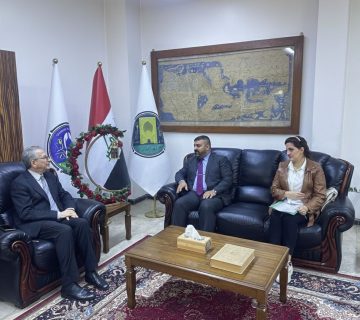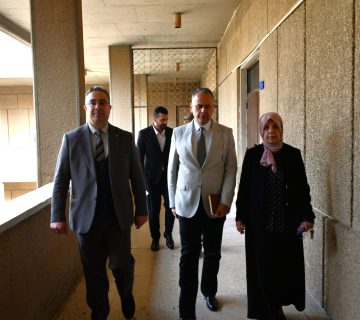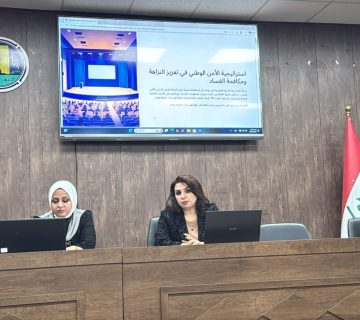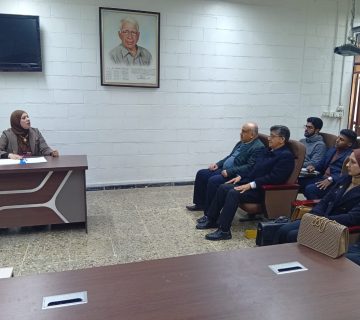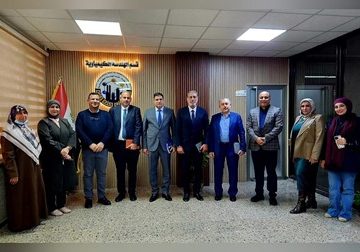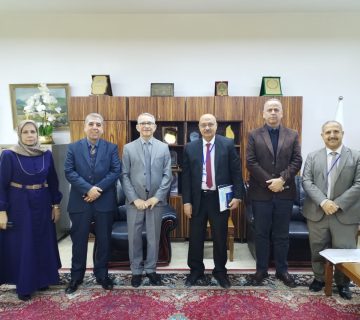Evaluation of Petrophysical Properties and 3D Geological Model for Sa’di Reservoir / Halfaya Oil field
- Prof. Dr. Farqad Ali Hadi (Chairman) University of Baghdad
- Prof. Dr. Nagham Jasim AlAmeri (Member) University of Baghdad
- Emad Abdulhusain Fakher (Member) University of Technology
- Ghanim M. Farman (Supervisor) University of Baghdad
ABSTRACT
Formation analysis is the most important step in formation evaluation. Where the reservoir feasibility can be calculated by estimating the petrophysical properties and computing the initial oil in place. This research has been done on datasets of five wells of Halfaya oil field, which is one of Iraq’s southern oil fields. The formation targeted for this study is Sa′di formation.
The environmental corrections and the interpretations were achieved by the Interactive Petrophysics Program (2018). Density-Neutron, MID, and M-N cross plots indicated that the main lithology of formation is limestone with little shale. Clay volume was calculated using resistivity log, neutron log, and gamma ray log methods and select the Gamma Ray method as an accurate method.
Porosity was computed using single and double log methods before performing a comparion to the porosity cores. The Density-Neutron as an methos is considered accurate method for determining the effective porosity for reservoir units. In contrast the sonic log is considered the best method for determining the effective porosity for non-reservoir units. Archie equation has been chosen to estimate water saturation where the value of formation water resistivity (RW) was ranged from 0.039 to 0.041 (ohm-m), a is assumed to be 1, n ranged from 1.89 to 1.9 and m ranged from 1.99 to 2.01.
Permeability of Sa′di formation have been estimated in uncored wells /units by three method (Classical, and Flow Zone Indicator). The results revealed that the Flow Zone Indicator (FZI) method gave a higher agreement with the core data rather than the conventional method.
The rocks type of Sa′di formation has been identified by cluster analysis technique. Three different of rock types were identified, these are: Rock type-1, which is good reservoir quality rock properties, is characterized by low water saturation (about 7% – 24%), permeability is more than 3 md with high porosity fraction ranging from (12 % -26%). Rock type-2, which is poor reservoir quality properties, is characterized by the higher water saturation which is more than (60%), permeability (0.01 md) and the average porosity is (8%). In contrast, Rock type-3, which is the bad quality properties, is primarily consisted of high water saturation (75%-100%), permeability is less than (0.01md) and porosity is less than (1%).
Petrel software (2018) was used to determine the initial oil in place (OOIP) of Sa′di formation after building a 3D static model by distributing the reservoir rock properties. The Sa′di formation is divided into five units (A1, A2, B1, B2, and B3)) based on computer processed interpretation (CPI), final geological report, lithology and petrophysical parameters. The general investigation showed that B2 unit have the best quality properties in the Sa′di formation. In contrast, the B3 unit have moderate properties if it is compared (60%). Finally, the amount of initial oil in place in Sa′di formation of Halfya oilfield that estimated by the static model is equal to 4.176 * 109 STB.



